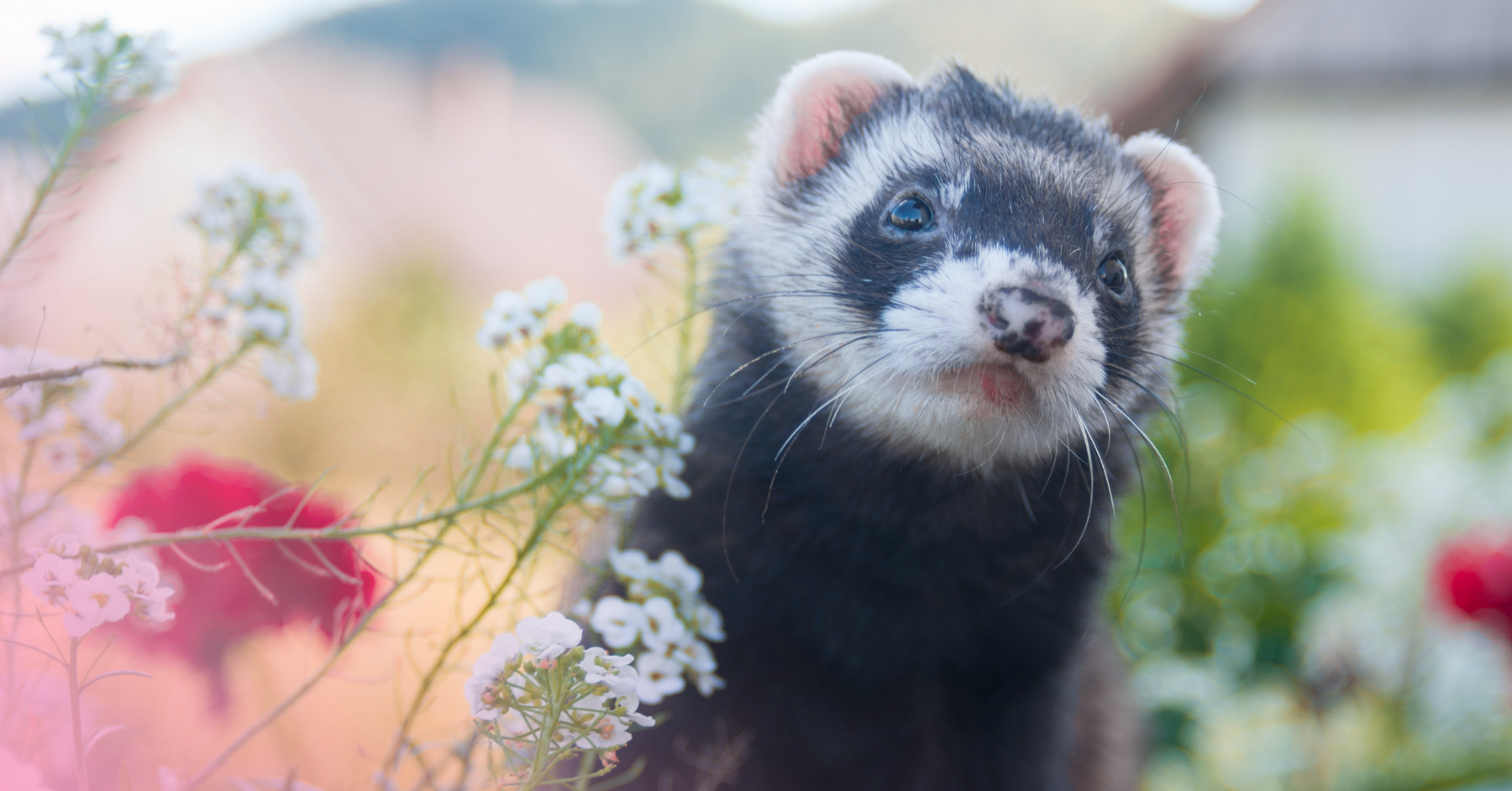
Ferrets are not just our favorite “little thieves”. They are remarkable, adorable relatives of wolverines, ermines, minks and weasels, who have become popular companion animals among humans.
Before we get into some of what makes these mammals absolutely amazing (and endearing!), here’s the 4-1-1 on ferret-related lingo:
- Business: a group of ferrets.
- Ferret: a word derived from the Latin furittus, which means “little thief” and describes “a small, furry creature with a cone-shaped nose, long tail and a long, pear-shaped body with short legs and long claws”.
- Black-Footed Ferret: the species of ferret that remains wild (M. nigripes).
- Common Ferret: the species of ferret that has been domesticated by humans (Mustela putorius furo).
- Ferreting: an ancient practice in Europe and Asia that relies on ferrets to drive rabbits, rats, and other small animals from their underground burrows.
- Glib: a male, neutered ferret.
- Hob: a male, unneutered ferret.
- Jill: a female, unspayed ferret.
- Kit: a baby ferret.
- Sprite: a female, spayed ferret.

With the lingo down, here’s what you need to know about common ferrets:
- They are playful, inquisitive, adorably mischevious, and perpetually curious!
- They are thought to have been domesticated from the European polecat around 2,500 years ago (by the Greeks) for the purpose of hunting small animals, and they were introduced to North America in the 18th century by sailors who kept them on ships to hunt rats.
- They have been human companions for many, many years and are estimated to reside in upwards of 300,000 U.S. homes.
- When excited, they often engage in “the weasel war dance” – arching their backs, puffing out their tails, hopping about, and, often, “dooking” (i.e., making clucking sounds)!
- They average 20 inches in body length (including an approximately 5-inch tail) and 2 pounds in body weight. (But, at birth, they can fit inside a teaspoon!)
- They are notoriously clumsy, a trait attributed to their nearsightedness and poor depth perception!
- They are crepuscular, meaning they are most active at dawn and dusk (when their otherwise poor vision is best!).
- They sleep up to 18 hours a day.
- Just like domestic cats, they are obligate carnivores and can be taught to walk on leashes, use litter-boxes, and more!
- They hear well and have a sense of smell that “far surpasses human (and even dog) capabilities”!
- They are highly intelligent, with incredible learning and problem-solving capacities!
- They can develop a “wide range of fur colors, including dark-eyed white, sable, black sable, silver, albino, cinnamon, and chocolate”.
- They have been used by humans to run wire for decades (and including at Boeing!).
- They have a “light musky odor”, which is reflected in their Latin name: Mustela = weasel, and putorius = smelly!
- They cannot survive in the wild for more than, at most, a few days.

And, here’s what you need to know about black-footed ferrets:
- They are “playful” and “charming”!
- They are North America’s rarest mammal and a critically endangered species. (Relying on prairie dogs for food, the extermination of prairie dogs by agricultural operations has pushed ferrets to extinction – both because they cannot find food and because they die from ingesting poisoned prairie dogs.)
- They are “quick and bold”!
- They are considered a “flagship species”, meaning that “saving them contributes to preserving lots of other important but less well-known (and often less charismatic) species”!
- They are “playful and vocal”! (They bark, chatter, and chuckle!)
- They average 18-24 inches in body length (including a 4-6 inch tail) and less than 3 pounds in pound weight; and they are described as being “[s]haped like tubes of muscle” (with “the same circumference at the neck as at the hips”).
- They are “exceedingly cute”!
- They are yellow-beige in color with distinctive black markings on their legs, feet, tails, and faces (which feature “distinctive ‘stick-em up’” masks)!
- They engage in a “ferret dance”, which involves “hopping about with their mouths wide open, apparently having all sorts of fun”!
- They are fossorial (meaning they live underground, in abandoned prairie dog burrows), solitary (with the exception of breeding and caring for their young), mainly nocturnal, and requiring of 100-120 acres of living space to find adequate food.